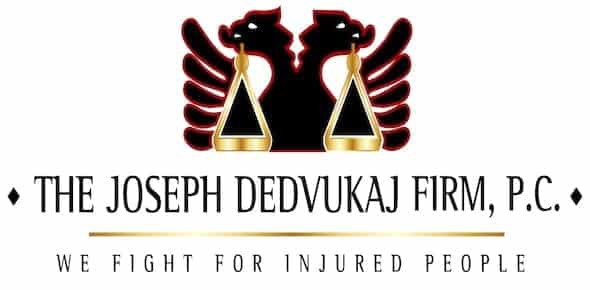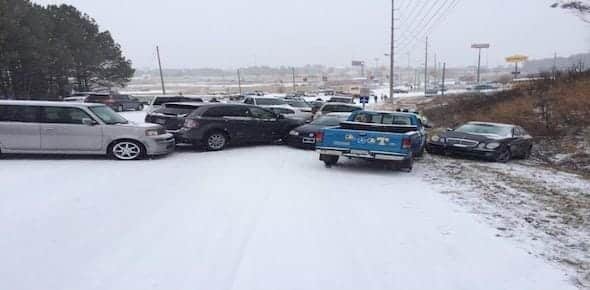A chain reaction car accident is a type of pile up crash, where more than a single or two-car collision can be the cause of the accident. Here is what you need to know about how Michigan handles this type of case.
Being involved in a car accident is stressful enough without worrying about who was at fault for your legal claim. Between personal injuries and damage to your vehicle, the last thing you want to think about is proving who was at fault for the crash.
But the first thing that the insurance company wants to determine is who’s at fault. If you’re in an auto accident, it’s crucial to file a police report. You should also take car accident scene photos to help provide insurance adjusters and the court with evidence of how the accident happened.
Sometimes, it’s clear cut, but not always.
Chain reaction car accidents
A pile-up accident is a chain reaction accident involving more than two vehicles. In many crashes, the multi car accident is the most dangerous type of auto accidents because they involve multiple vehicles hitting other vehicles on the road. Thus, one car can be hit more than one time. Also, though an accident happens in a split-second, people see the first few collisions and react, but sometimes those knee-jerk panic maneuvers lead to even more impacts.
The multiple car accident is more complicated than a single and two-vehicle collision because there can be multiple plaintiffs and defendants pointing fingers at each other blaming fault. In this kind of pile up, the parties involved are often sharing damages to the car accident victim.
Drivers in a chain reaction accident are asked:
Could you have done something differently to prevent being involved in the accident?
In most pile up accident, there is usually one driver who begins the chain of events that lead to a pile-up or chain reaction accident. If Driver A loses control, hits Driver B, and Driver B hits Driver C, who’s at fault? Probably Driver A is the most at fault for losing control, but does Driver B bear some fault, too? It depends on the facts and circumstances. What if Driver C argues that Driver B was going too fast for conditions after the first impact, Driver B would have never collided with Driver C? Or what if Driver C claims that Driver B was already following too closely before being hit by Driver A, and had he been the correct distance from Driver C, that impact wouldn’t have happened? Clearly, there are many variables to consider about how a multi-car accident happened, and many factors why and how they occur.
It’s up to the insurance companies to examine the evidence and make a determination of percentage fault for each of the drivers involved in the accident. If the insurance companies aren’t able to agree on how the case should be settled, you might find yourself in court having a jury apportion fault to each defendant.
Michigan Comparative Negligence Law
Michigan is a modified comparative negligence state so are legal principles in which the plaintiff’s actions are a contributing factor to the injury in an accident, which can reduce the amount of damages recovered from the defendant. If the Plaintiff is more than 50% at fault then noneconomic damages are barred. However, in Michigan economic damages can be recovered even if you are more than 51% at fault.
Of course, in a pile-up car accident with more than two vehicles, assigning fault and determining how much each driver is at fault can be complicated.
What if you’re in a multi-car accident?
Stay in your vehicle. If you’re involved in a pile-up crash and you are not suffering from any injuries, you should stay in the car. You’re safer in the car than outside, especially if additional vehicles are becoming part of the crash. Wait for police, fire, or EMS to arrive and tell you how and when to exit the vehicle.
Turn on your hazard lights. In a chain reaction highway accident, other cars behind you can be approaching the crash scene at high rates of speed. Others on the road approaching the crash site might not realize that cars are stopped or that there has been an accident until it’s too late. Even if you’re in the middle of the car pileup, turn on your hazard light to help other drivers be aware of the crash.
Collect as much information as possible. Once you get direction from the first responders to exit your vehicle, you should begin gathering evidence, but only if you can do so safely and without injuring yourself further. Your evidence gathering could include photos, police reports, license plate numbers, contact information for eyewitnesses, and any other helpful information about the car accident.
Get a physical examination. Even if you think you weren’t injured, it’s important for you to get check out by medical professional to get a full physical exam immediately after a car accident. If you develop symptoms later that might be connected, your doctor will have a full medical report.
Call your insurance company. Be careful what you say to the insurance company. As soon as you’re safe, it’s crucial that you report your accident to your insurance company. The adjuster will ask questions and offer advice for handling the situation. DON’T speak with any other driver’s insurance company.
Be careful what you say. If a police officer asks for your account of what happened, be truthful but don’t admit fault. It’s best to avoid sharing anything about an accident on social media, but if you must, you can say that you were involved in a collision but avoid posting any details about how it happened.
Michigan personal injury lawyer pile-up car accident
Since a multi-car accident is more complicated than most car accidents, there’s a higher likelihood that there will be attorneys involved for all parties because the insurance companies might not be willing to accept fault. Call us today at 248-352-2110 or toll free at 866-HIRE-JOE for a free consultation with one of our expert auto accident attorneys.


